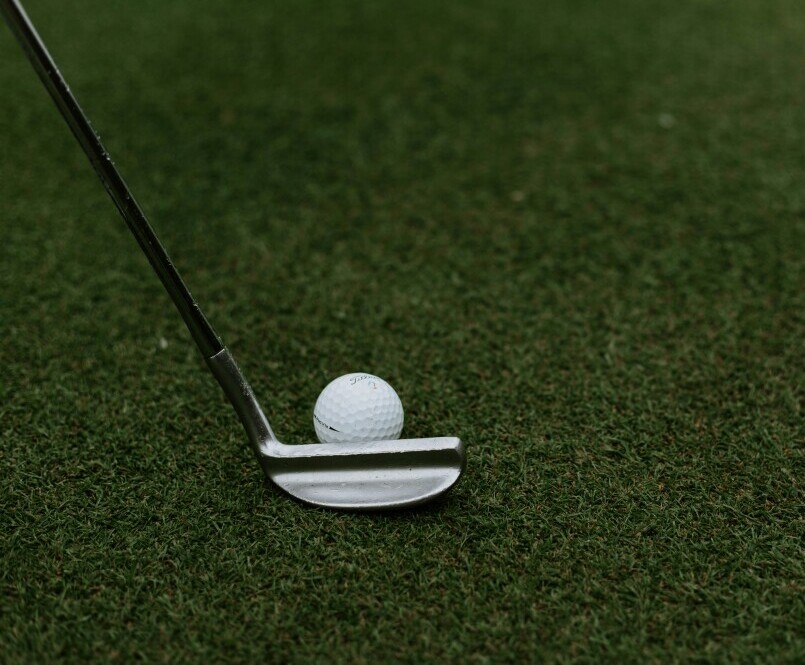Tips For Putting In Golf


Fore! Quick note: a few links here are affiliate links. If you snag gear through them, I earn a small commission — no extra strokes added to your game.
Putting might just be the secret sauce of golf. It doesn’t matter if you’ve driven the ball like a champ across the fairway, your performance on the green can make or break your game. Knowing why putting is essential can shift how you approach every game you play. The golf viking is back to give you the ultimate tips for putting in golf.
A lot of folks don’t realize just how much putting influences scores. Over half of the strokes in an average game are taken from within 100 yards of the green, with putting taking up a significant chunk. Because of its impact, mastering putting plays a big part in shrinking your handicap and elevating your game. You can be an excellent driver, but if it takes you 3 strokes to putt every hole, you will have a tough time keeping your score low.
There’s a mental component too. Putting isn’t just about the physical motion; it’s about the mental game. Confidence on the green comes with practice, sure, but understanding that the game is part-mental arms you with just the right mindset. The pressure of sinking critical putts can be intense, but approaching each shot with a calm and focused mind sets the stage for success.
Developing a good putting game builds mental toughness and boosts confidence, and when you’re confident in your putting, it spills over to the rest of your game. So, think about putting not just as a part of golf, but as a key exercise in improving your overall sports performance. Let’s get the basics down so we can start with a good foundation.
Perfecting your putting starts with a solid short game foundation—check out Short Game Mastery to strengthen your touch and control around the greens.
Ready to level up your golf game? Click here.

Mastering the Basics: The Art of Putting
Perfecting your putting starts with the basics. Unlike the full swing, putting demands a unique set of skills and techniques. Let’s break down the fundamental elements to help you build a solid foundation you can build upon. Once you have gotten the fundamentals down, you can focus more on reading your putts instead of your swing.
Everything begins with your stance. A good stance is about staying balanced and maintaining a stable base. Position your feet shoulder-width apart, keep your weight evenly distributed, and bend slightly at the knees. This position gives you control and the ability to produce a smooth stroke. The stance is important always but especially with your putts, you want to put your body in the best position for a smooth stroke.
Grip matters too, and, just like with your stance, consistency is key. Whether you go conventional or try a cross-handed grip, stick with what feels natural and gives you control. The most important thing is to keep your wrists quiet during the stroke. There are different grips that golfers use, you can try them and decide which grips work best for you. But once you have decided which grip you like, then keep the grip. Consistency is the key.
Speaking of the stroke, aim for simplicity. Unlike chipping or driving, we aren’t looking for power. A smooth, pendulum-like motion is what’s gonna get the job done. Think short backswing and a controlled follow-through. This motion helps achieve precision and control, which are crucial for sinking those putts. You aren’t trying to go for distance like you might be with your driver, so it’s more important to hit with finesse.
Professional golfers often study and tweak their techniques, and so can you. Analyzing videos of the pros, maybe even recording your own stroke, helps pinpoint areas needing improvement. Small adjustments in alignment or stroke mechanics can make a huge difference.
Embrace these basics, and over time, you’ll likely see improvements in your scores. Putting should be straightforward once you get the basics down, yet it’s where many games are truly won. Now that we understand the basics of good putting mechanics, let’s get into another incredibly important aspect of putting. Reading your putts.
Distance control is critical for consistent putting. Pair your practice with advice from Best Tips for Controlling Distance in Chip Shots to improve feel and precision.

Enhancing Precision: Judging Your Putts Better
Precision on the green is where you start seeing real improvements in your scores. It’s about accuracy and knowing just how to judge those tricky puts. Practicing your swing is a must, but once your swing is down then the next challenge is reading your putts. Being able to accurately read your putts will be crucial in mastering your putting game.
First up, focus. This isn’t just about the few seconds before you take the shot. Being aware of your posture and environment helps immensely. Pay close attention to your alignment and how your putter squares to the ball. You’ll be surprised how small tweaks here can change your game. Keep focused on the ultimate objective and throw all distractions to the wayside.
Drills are your new best friend. There’s. nothing that can help your putting better than simple practice. A trusty one is the gate drill, where you place two tees slightly wider than your putter’s head as gateposts. Practice putting through the gate to improve alignment and precision. Another drill? The distance control challenge, setting up several balls at different lengths to practice your stroke catering to longer or shorter putts. There are various drills you can try, but make sure that they are helping to improve your putting.
Visualization isn’t just for the pros. Imagine the ball’s path all the way to the hole. Pre-visualization helps build confidence and creates a mental image of success. By picturing the ideal putt, you mentally prepare your body for the motion. So focus on your objective, and then visualize how the ball is going to make its way into the hole.
Remember, judging the putt well involves practice and sharpening your instincts. After all, each green is unique, and nothing beats experience for reading the subtle cues like break and speed. Every green will present challenges that you will need to overcome. With consistent practice, your accuracy and confidence will improve over time. Let’s talk about the kinds of greens you might be facing over time.
The right putter can make all the difference. Explore our recommendations in The Most Accurate Golf Putters for tools that suit your stroke.

Reading the Green: Understanding Different Types of Greens
Navigating the world of greens can feel like a whole new adventure every time. Each green presents its own challenges, so being prepared to read its unique features is vital. Every course is different, this is part of what makes golf fresh and exciting. But the more experienced you become, the better you will be able to handle the various types of greens.
First, recognize the type of grass you’re dealing with. Bermuda and Bentgrass are two of the most common greens, but they’re quite different. Bermuda greens often have grain that can affect the ball’s roll, while Bentgrass is usually smoother and provides a more consistent roll. Knowing these can help you anticipate how your putt might break. This knowledge can help you stay ahead of your competition.
Reading the slope is a skill worth mastering. Always look from both behind the ball and the hole to get a comprehensive view of the terrain. Squat down, observe, and trace the path in your mind. Look out for subtle undulations and downhill or uphill slopes which will affect the speed and direction of your putt. This is going to be key in determining your line and speed.
Grain direction adds another layer to your strategy. On Bermuda greens, run your hand over the surface to feel the grain. If it feels smooth, you’re going with the grain, if rough, against it. This seemingly tiny detail can make or break your putt, especially in longer shots. The longer the shot, the more impact this will have on your putt.
In terms of green speed, take the time to test how your ball reacts across the surface pre-game. Feel how fast the grass is by rolling a few practice putts. Adjust your force accordingly during play. This will all depend on your position on the green that you are putting from.
Adapting to different greens is an invaluable skill that separates good players from great ones. The beauty of golf is that with each course, you’re given a new puzzle to solve. With patience and practice, you’ll learn to tackle each with precision and confidence. Let’s go over some putting strategies to help you become confident on the green.
If you’re working on both performance and budget, see The Best Budget-Friendly Golf Putters to get effective equipment without overspending.

Advanced Tips: Speed and Strategy in Putting
Mastering the speed of your putt is an art. The key is balancing power and touch. Establishing a good rhythm in your practice swings is crucial, which translates effectively into the real putt. Knowing how much force you need to reach the hole without overshooting it is what separates seasoned golfers from the newbies. Even the most seasoned golfers have struggled with this.
Assessing the break and slope should become second nature. A gentle break needs a different touch compared to a sharp bend. Having a strategy for reading these breaks will help hone your skills. Try to identify the highest point of the break for both long and short putts. This spot will guide your aim and help sink that ball with precision.
Another great tactic is to borrow insights from the pros. Spend some time watching how professional golfers attack various greens. Notice the subtle adjustments they make under different conditions. Their experience highlights effective strategies that you can then try in your own game. Who better to learn from than the pros themselves?
Speed needs to be married with strategy, never relying on force alone. Think about how different green speeds and conditions affect your approach. Adjust your natural putting routine, sometimes tweaking your grip or stance to see better results. Speed and line work together. The line of your putt is going to be dependent on the speed in which you are hitting the ball.
Take advantage of practice rounds to test various speeds and strategies. Most courses have practice greens so that you can get a feel for the types of greens you will be working with before you head out onto the course. The more you play and adapt, the better you’ll fine-tune this skill to become a formidable player who can glide past any green conditions with aplomb. Leveraging advanced insights and techniques ensures every round is a learning opportunity. I’ll see you out on the golf course, putting prodigies.


